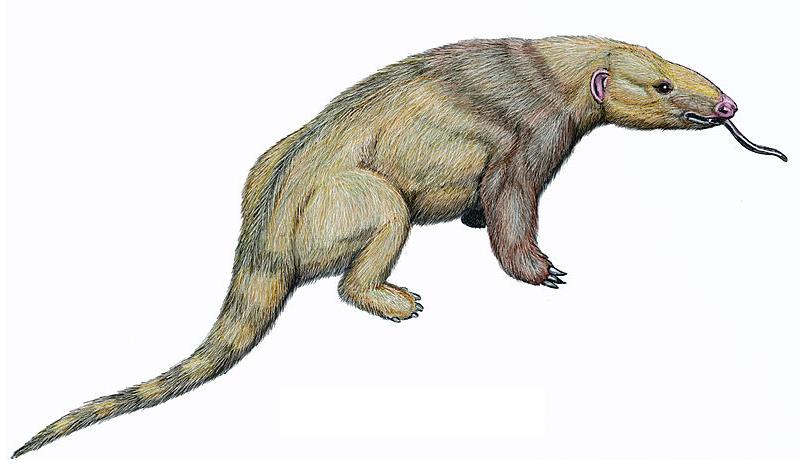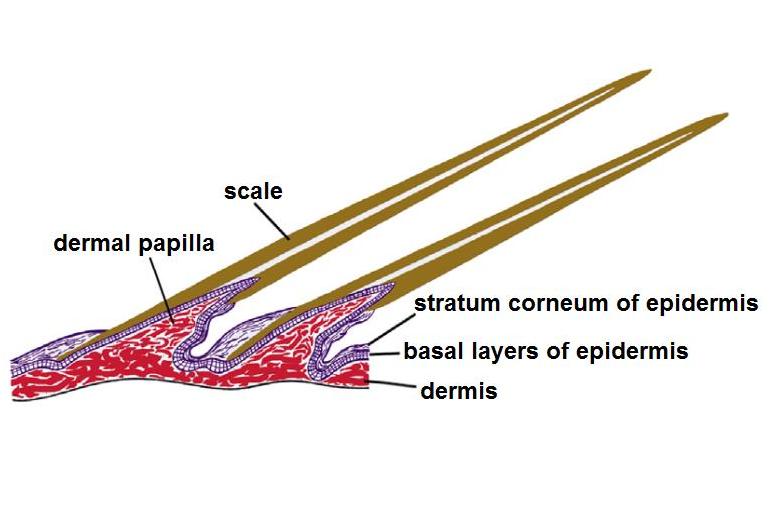|
Necromanis
''Necromanis'' ("extinct pangolin") is an extinct genus of pangolin from superfamily Manoidea. It lived during the Oligocene and Miocene of Europe. It was originally placed within family Manidae, but was eventually removed from it as more fossil pholidotids from outside that family were found and studied more extensively (i.e., with the discovery and study of ''Eomanis'' and '' Patriomanis'').Gaudin, Timothy J., Robert J. Emry, and Brandon Pogue. "A new genus and species of pangolin (Mammalia, Pholidota) from the late Eocene of Inner Mongolia, China." Journal of Vertebrate Paleontology 26.1 (2006): 146-159. Currently, ''Necromanis'' is placed as ''incertae sedis'' within the pholidotid superfamily Manoidea, together with the families Manidae and Patriomanidae. ''N. quercyi'' was originally placed within ''Teutomanis'' by Ameghino in 1905, but was later subsumed into ''Necromanis''. A new fossil humerus attributed to ''N. franconica'' from Quercy Quercy (; oc, Carcin , lo ... [...More Info...] [...Related Items...] OR: [Wikipedia] [Google] [Baidu] |
Pangolin
Pangolins, sometimes known as scaly anteaters, are mammals of the order Pholidota (, from Ancient Greek ϕολιδωτός – "clad in scales"). The one extant family, the Manidae, has three genera: '' Manis'', '' Phataginus'', and '' Smutsia''. ''Manis'' comprises the four species found in Asia, while ''Phataginus'' and ''Smutsia'' include two species each, all found in sub-Saharan Africa. These species range in size from . A number of extinct pangolin species are also known. Pangolins have large, protective keratin scales, similar in material to fingernails and toenails, covering their skin; they are the only known mammals with this feature. They live in hollow trees or burrows, depending on the species. Pangolins are nocturnal, and their diet consists of mainly ants and termites, which they capture using their long tongues. They tend to be solitary animals, meeting only to mate and produce a litter of one to three offspring, which they raise for about two years. Pangol ... [...More Info...] [...Related Items...] OR: [Wikipedia] [Google] [Baidu] |
Pangolin Hardwicke (white Background)
Pangolins, sometimes known as scaly anteaters, are mammals of the order Pholidota (, from Ancient Greek ϕολιδωτός – "clad in scales"). The one extant family, the Manidae, has three genera: '' Manis'', '' Phataginus'', and '' Smutsia''. ''Manis'' comprises the four species found in Asia, while ''Phataginus'' and ''Smutsia'' include two species each, all found in sub-Saharan Africa. These species range in size from . A number of extinct pangolin species are also known. Pangolins have large, protective keratin scales, similar in material to fingernails and toenails, covering their skin; they are the only known mammals with this feature. They live in hollow trees or burrows, depending on the species. Pangolins are nocturnal, and their diet consists of mainly ants and termites, which they capture using their long tongues. They tend to be solitary animals, meeting only to mate and produce a litter of one to three offspring, which they raise for about two years. Pangol ... [...More Info...] [...Related Items...] OR: [Wikipedia] [Google] [Baidu] |
Pangolin
Pangolins, sometimes known as scaly anteaters, are mammals of the order Pholidota (, from Ancient Greek ϕολιδωτός – "clad in scales"). The one extant family, the Manidae, has three genera: '' Manis'', '' Phataginus'', and '' Smutsia''. ''Manis'' comprises the four species found in Asia, while ''Phataginus'' and ''Smutsia'' include two species each, all found in sub-Saharan Africa. These species range in size from . A number of extinct pangolin species are also known. Pangolins have large, protective keratin scales, similar in material to fingernails and toenails, covering their skin; they are the only known mammals with this feature. They live in hollow trees or burrows, depending on the species. Pangolins are nocturnal, and their diet consists of mainly ants and termites, which they capture using their long tongues. They tend to be solitary animals, meeting only to mate and produce a litter of one to three offspring, which they raise for about two years. Pangol ... [...More Info...] [...Related Items...] OR: [Wikipedia] [Google] [Baidu] |
Manoidea
Manoidea is a superfamily of pangolins from suborder Eupholidota that includes extant family Manidae, extinct family Patriomanidae and extinct genus ''Necromanis''. Taxonomy * Superfamily: Manoidea ** Family: Manidae (pangolins) ** Family: †Patriomanidae ** ''Incertae sedis'' *** Genus: †''Necromanis ''Necromanis'' ("extinct pangolin") is an extinct genus of pangolin from superfamily Manoidea. It lived during the Oligocene and Miocene of Europe. It was originally placed within family Manidae, but was eventually removed from it as more f ...'' Phylogeny Phylogenetic position of superfamily Manoidea within suborder Eupholidota. References Pangolins Mammal superfamilies {{mammal-stub ... [...More Info...] [...Related Items...] OR: [Wikipedia] [Google] [Baidu] |
Sansanosmilus
''Sansanosmilus'' is an extinct genus of carnivorous mammal of the family Barbourofelidae (false saber-tooth cats) endemic to Europe, which lived during the Miocene, 13.6—11.1 mya, existing for approximately . Taxonomy ''Sansanosmilus'' is a member of the family Barbourofelidae, a group of feliform carnivorans related to either felids or nimravids. It had short legs, was very muscular and had a long tail. ''Sansanosmilus'' was 1.5 m long and probably weighed around 80 kg. In 1961, paleontologist L. Ginsburg concluded that ''Sansanosmilus'' was possessed of a plantigrade walking stance, after studying its foot bones and comparing it with those of the true felid ''Pseudaelurus'' from the same site. This is different from later barbourofelids, which are believed to have had semi-plantigrade or semi-digitigrade stances. The type species, ''Sansanosmilus palmidens'', is known from fossils from the Orleanian and Astaracian stages in France. Although ''Albanosmilus ''Al ... [...More Info...] [...Related Items...] OR: [Wikipedia] [Google] [Baidu] |
Eupholidota
Eupholidota ("true pangolins") is a suborder of pangolins that includes two superfamilies: extant Manoidea and extinct Eomanoidea. Taxonomy * Suborder: Eupholidota (true pangolins) ** Superfamily: Manoidea *** Family: Manidae (pangolins) *** Family: †Patriomanidae *** ''Incertae sedis'' **** Genus: †''Necromanis ''Necromanis'' ("extinct pangolin") is an extinct genus of pangolin from superfamily Manoidea. It lived during the Oligocene and Miocene of Europe. It was originally placed within family Manidae, but was eventually removed from it as more f ...'' ** Superfamily: † Eomanoidea *** Family: † Eomanidae Phylogeny Phylogenetic position of suborder Eupholidota within order Pholidota. References Pangolins {{mammal-stub ... [...More Info...] [...Related Items...] OR: [Wikipedia] [Google] [Baidu] |
Patriomanidae
Patriomanidae ("fathers of pangolins") is a extinct family of pangolins from superfamily Manoidea that includes two extinct genera ''Patriomanis'' and '' Cryptomanis''. Taxonomy * Family: †Patriomanidae ** Genus: †'' Cryptomanis'' *** †''Cryptomanis gobiensis'' ** Genus: †''Patriomanis ''Patriomanis'' ("father of pangolins") is an extinct genus of pangolin from extinct family Patriomanidae. It lived during the Eocene of North America and it currently represents the only pangolin known from the Western Hemisphere. The genus co ...'' *** †''Patriomanis americana'' Phylogeny Phylogenetic position of family Patriomanidae within superfamily Manoidea. References Prehistoric pangolins Prehistoric mammal families {{Paleo-mammal-stub ... [...More Info...] [...Related Items...] OR: [Wikipedia] [Google] [Baidu] |
Manidae
Manidae is the only extant family of pangolins from superfamily Manoidea. This family comprises three genera ('' Manis'' from subfamily Maninae, ''Phataginus'' from subfamily Phatagininae, and ''Smutsia'' from subfamily Smutsiinae), as well as extinct Fayum pangolin. Classification and phylogeny History of classification All species of living pangolin had been assigned to the genus ''Manis'' until the late 2000s, when research prompted the splitting of extant pangolins into three genera: '' Manis'', ''Phataginus'', and ''Smutsia''. Taxonomy * Family: Manidae (pangolins) ** Subfamily: Maninae (Gray, 1821) *** Genus: '' Manis'' (Linnaeus, 1758) (Asiatic pangolins) **** ''Manis crassicaudata'' (Gray, 1827) (Indian pangolin) **** ''Manis pentadactyla'' (Linnaeus, 1758) (Chinese pangolin) **** ''Manis'' sp. (''Scale_H4'' & ''Scale_H8'')Jingyang Hu, Christian Roos, Xue Lv, Weimin Kuang, Li Yu (2020."Molecular Genetics Supports a Potential Fifth Asian Pangolin Species (Mammalia, ... [...More Info...] [...Related Items...] OR: [Wikipedia] [Google] [Baidu] |
Eurotamandua
''Eurotamandua'' ("european ''Tamandua''") is an extinct genus of mammal from extinct family Eurotamanduidae that lived some 40-35 million years ago, during the middle Eocene. A single fossil is known, coming from the Messel Pit in southwestern Germany. ''Eurotamandua'' was about long. Most palaeontologists now classify ''Eurotamandua'' as a pangolin. When its fossils were first discovered, ''Eurotamandua'' was originally thought to be an anteater, as it lacked the characteristic fused-hair scales of other pangolins. ''Eurotamandua'' placement within the pangolins was made primarily because of a lack of the characteristic "xenarthran" joints found in all xenarthrans, including tamanduas. There is still much ambiguity in the taxonomy of all mammals prior to the Eocene, so there is the possibility that ''Eurotamandua'' was a primitive xenarthran. However, this is highly unlikely because all known fossil evidence indicates that xenarthrans existed exclusively in South America from ... [...More Info...] [...Related Items...] OR: [Wikipedia] [Google] [Baidu] |
Patriomanis
''Patriomanis'' ("father of pangolins") is an extinct genus of pangolin from extinct family Patriomanidae. It lived during the Eocene of North America and it currently represents the only pangolin known from the Western Hemisphere. The genus contains one species, ''P. americana'', which is known from six specimens, mostly from the Chadronian White River Formation of Montana Montana () is a state in the Mountain West division of the Western United States. It is bordered by Idaho to the west, North Dakota and South Dakota to the east, Wyoming to the south, and the Canadian provinces of Alberta, British Columb .... It had long digits and a prehensile tail, suggesting that it was arboreal, and its jaw was capable of opening wider than modern pangolins. Its ears and the hair between its scales were also longer than modern pangolins. Phylogeny Phylogenetic position of genus ''Patriomanis'' within family Patriomanidae. References {{Taxonbar, from=Q18818692 Prehisto ... [...More Info...] [...Related Items...] OR: [Wikipedia] [Google] [Baidu] |
Mammal Enigmatic Taxa
Mammals () are a group of vertebrate animals constituting the class (biology), class Mammalia (), characterized by the presence of mammary glands which in Female#Mammalian female, females produce milk for feeding (nursing) their young, a neocortex (a region of the brain), fur or hair, and three ossicles, middle ear bones. These characteristics distinguish them from reptiles (including birds) from which they Genetic divergence, diverged in the Carboniferous, over 300 million years ago. Around 6,400 extant taxon, extant species of mammals have been described divided into 29 Order (biology), orders. The largest Order (biology), orders, in terms of number of species, are the rodents, bats, and Eulipotyphla (hedgehogs, Mole (animal), moles, shrews, and others). The next three are the Primates (including humans, apes, monkeys, and others), the Artiodactyla (cetaceans and even-toed ungulates), and the Carnivora (cats, dogs, pinniped, seals, and others). In terms of cladistic ... [...More Info...] [...Related Items...] OR: [Wikipedia] [Google] [Baidu] |
Oligocene
The Oligocene ( ) is a geologic epoch of the Paleogene Period and extends from about 33.9 million to 23 million years before the present ( to ). As with other older geologic periods, the rock beds that define the epoch are well identified but the exact dates of the start and end of the epoch are slightly uncertain. The name Oligocene was coined in 1854 by the German paleontologist Heinrich Ernst Beyrich from his studies of marine beds in Belgium and Germany. The name comes from the Ancient Greek (''olígos'', "few") and (''kainós'', "new"), and refers to the sparsity of extant forms of molluscs. The Oligocene is preceded by the Eocene Epoch and is followed by the Miocene Epoch. The Oligocene is the third and final epoch of the Paleogene Period. The Oligocene is often considered an important time of transition, a link between the archaic world of the tropical Eocene and the more modern ecosystems of the Miocene. Major changes during the Oligocene included a global expansion o ... [...More Info...] [...Related Items...] OR: [Wikipedia] [Google] [Baidu] |


.jpg)
.jpg)

